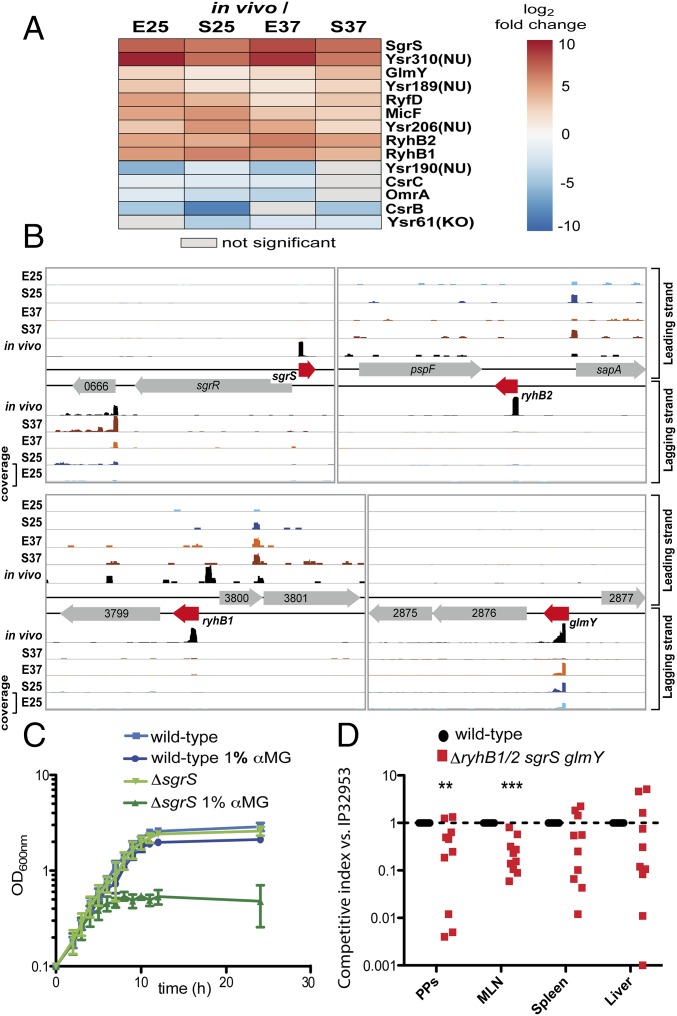Fig. 5.
Highly conserved bacterial ncRNAs contribute to pathogenesis. (A) Heat map of in vivo-enriched (red) and -depleted (blue) trans-encoded bacterial ncRNAs. Values represent the log2 fold change of indicated conditions (adjusted P value ≤ 0.05). (B) Read coverage of the RNA-seq analysis of the sgrS, ryhB1, ryhB2, and glmY loci is illustrated in the Integrated Genome Browser (99). The data were normalized according to the number of uniquely mapped reads. E25, exponential phase 25 °C; E37, exponential phase 37 °C; in vivo, infected Peyer’s patches; S25, stationary phase 25 °C; S37, stationary phase 37 °C. (C) Y. pseudotuberculosis WT strain IP32953 and the isogenic ΔsgrS strain were grown in LB at 37 °C in the presence or absence of 1% αMG, a glucose-phosphate stress-inducing agent. (D) Two independent groups of BALB/c mice (2 × n = 5 per group) were orally infected with an equal mixture of 107 cfu IP32953 (WT) and the isogenic mutant YPIP56 (ΔsgrS/ryhB1/ryhB2/glmY). Data are graphed as competitive index values for tissue samples from one mouse in Peyer’s patches (PPs), mesenteric lymph nodes (MLNs), and organs after 3 days. A competitive index score of one denotes no difference in virulence compared with the WT. The statistical significance between the WT and the mutant was determined by a Wilcoxon signed rank test. **P ≤ 0.01; ***P ≤ 0.001.

